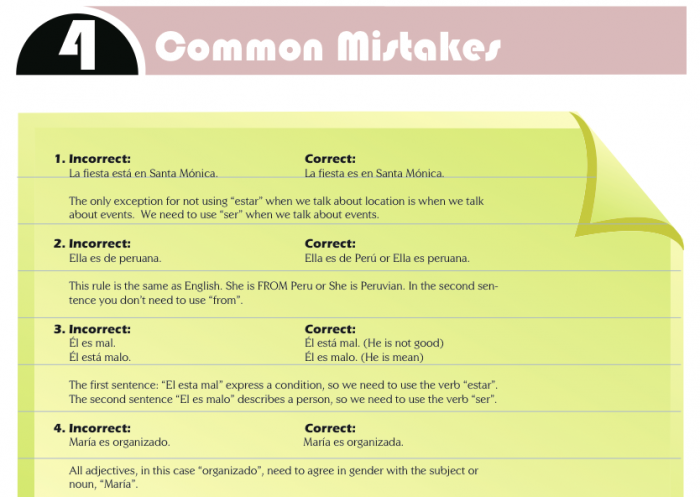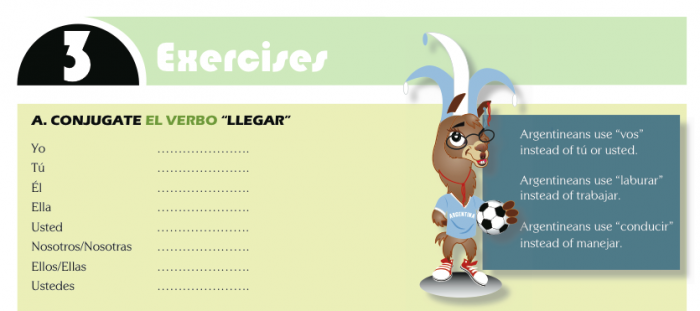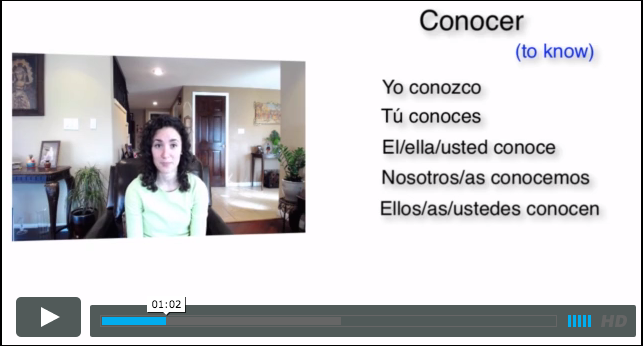The Spanish at Home Series: A Great Way to Practice Your Español En Casa
Writing an effective, engaging Spanish textbook isn’t easy. It must contain clear explanations about the complex grammar of the Spanish language, but too much grammar will end up boring. It needs to include several must-know colloquial expressions, but it can’t simply be a phrasebook. Perhaps the biggest challenge of all is that textbooks — unlike teachers — can’t respond to or correct your mistakes.
That’s where Spanish at Home comes in. The authors, Angela and Angiolina, are native Spanish speakers who are armed with over 15 years of teaching experience, and therefore, they know what mistakes English speakers make. Their books, which are based on their real-life lessons with students, strike this elusive balance of clear grammatical explanations and useful everyday phrases, and do a great job of predicting your mistakes before you make them.
Easy-to-process lessons
In Spanish at Home, each lesson focuses on a single, digestible topics that can be completed in thirty minutes to an hour. Some of the lessons focus on grammar points (e.g., the verb “haber”), whereas others are more thematic in nature (e.g., seasons and holidays).
The presentation of lessons is consistent across units: the relevant vocabulary and/or grammar is laid and, and is followed up by a series of interactive exercises. These exercises are varied in style, and can range from translations to fill-in-the-blanks to free writing tasks to speaking drills.
The common mistakes section, which is included in each lesson, was our favorite aspect of the Spanish at Home series, and is what really sets apart Spanish at Home from other textbooks. Angela and Angiolina do an extremely impressive job at predicting what mistakes you’ll make, and then correcting you before they turn into bad habits. Native English speakers who are learning Spanish as a non-native language are sure to personally identify with many of these mistakes, such as the one above.
Concise explanations
Though the Spanish at Home series is designed for self-study, the reader is not alone: you are accompanied by Totus the llama, who spices up otherwise dry grammar explanations with funny anecdotes and useful cultural information (see below). Aside from Totus, there are a bunch of human characters, too, who provide realistic examples of how vocabulary is used in real-life dialogues.
The grammar explanations themselves focus on the issues that English speakers struggle with the most, such as conjugating verbs like gustar, using the personal a, and correctly forming double negative constructions.
How good is your Spanish? Find out with our free Spanish level test!
Useful audio
In the Spanish at Home series, the text itself is very clear. However, each lesson is accompanied by a thorough audio, which supplements the text. This is particularly useful, as it is narrated by both a native English speaker and a native Spanish speaker. This ensures that you’ll really understand the concepts behind the topic, as well as be able to hear how the words and phrases that you’re learning sound when pronounced by a native speaker. In the absence of a native-speaking Spanish teacher, these audios will prove especially edifying.
Comprehensive videos
When you purchase a Spanish at Home book, you don’t just get the text and audio: each lesson is accompanied by a video, in which a Spanish at Home staff member dynamically explains the concepts presented in the lessons. The videos serve as a great complement to the text, as you can see the lessons come to life. Additionally, for concepts that are particularly challenging for English speakers (e.g., the difference between saber and conocer), having the lesson explained to you can help clarify what you’ve read.
Some constructive criticism: There are a few instances in which the authors omit accents (e.g., writing si instead of sí) — something that is totally natural in real-life written Spanish. For learners, however, this kind of omission can be confusing, as the placement of the accent can change the definition of the word (in the above example, si means “if” and sí means “yes”).
Despite these very minor issues, however, the Spanish at Home series has an excellent mix of grammar and colloquial expressions, giving the learner a seriously well-rounded introduction to the Spanish language. With its crystal-clear explanations and error correction, Spanish at Home will help you avoid the most common Spanish-language errors that are so ubiquitous among English speakers. Overall, we highly recommend it, either as a supplement to your language classes or as a guide for self-learners.
If you’re interested in learning more about the Spanish at Home series, visit Angela and Angiolina’s website.



